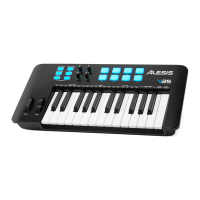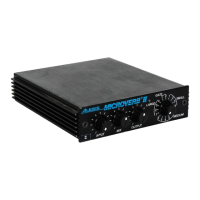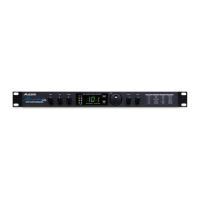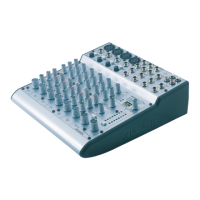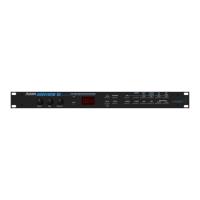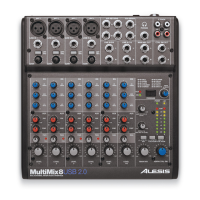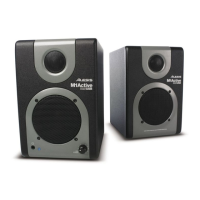Chapter 5
32 ALESIS ML-9600 REFERENCE MANUAL
Figure 5.4.3
Paste DSP Settings Page
Pressing the DOWN/NO button in this page will have no effect. Pressing the UP/YES button will paste
all DSP parameters from the temporary RAM buffer into the destination track. This process leaves the
RAM buffer intact, so multiple pastes are possible without having to re-copy each time.
5.4G DSP7:RESET DSP SETTINGS
If you just want to "zero" the DSP settings on a Track, returning them to the factory defaults and
turning them off, you can use the Reset DSP function.
To reset all DSP parameters in a Track, first select your destination Track, then press the TRACK DSP
button repeatedly until DSP Page 7 is displayed, as shown in Figure 5.4.4.
Figure 5.4.4
Reset DSP Settings Page
Pressing the DOWN/NO button in this page will have no effect. Pressing the UP/YES button will
prompt you with an "Are you sure? Y/N" message. Pressing DOWN/NO will cancel the DSP Reset
operation. Pressing UP/YES in this screen will reset all DSP parameters (Track Gain, Compression
parameters, EQ parameters, Limiter parameters, Normalizer parameters, and Track Fade parameters)
in the destination track.
5.4H DSP8:RENDER DSP TO AUDIO FILE
MasterLink Track DSP is applied as a real-time process, allowing modifications to the DSP without
changing the original Audio File. There are instances, however, where it is convenient to commit, or
"render" the applied Track DSP to the Audio File, thereby permanently changing the Audio File. This
feature gives you the ability to render your Track DSP settings to the associated Audio File.
NOTE: The Render DSP function is a destructive edit and cannot be undone once rendered. If you need
to be able to recover the original, non-rendered audio data, be sure to make a copy of the Audio File
before rendering DSP (covered in Section 4.7d).
Once you have made the desired changes to the Track DSP settings and decide you wish to render the
DSP to the Audio File associated with your Track, press the TRACK DSP button repeatedly until DSP
Page 8 is displayed, as shown in Figure 5.4.5.
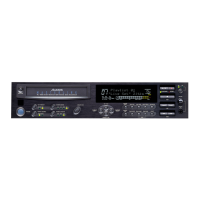
